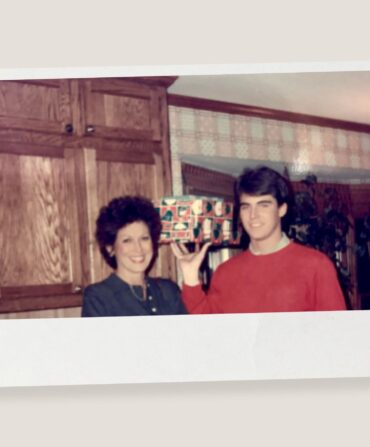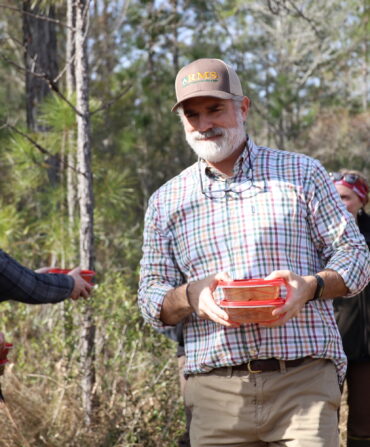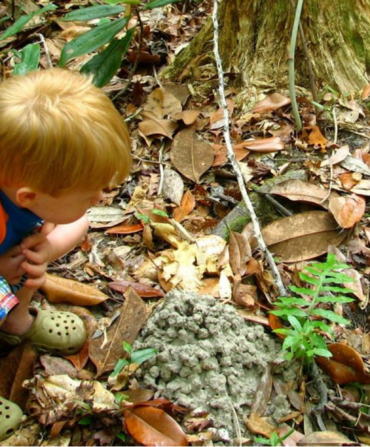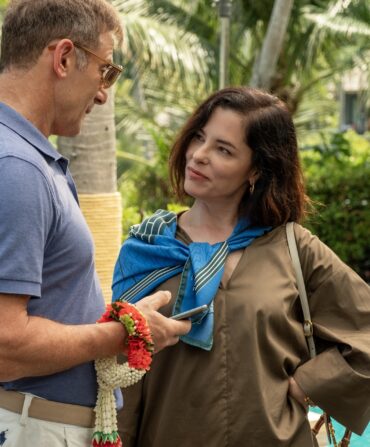Alabama
Still Growing Strong
Food
On Saturday mornings for the past quarter century, Birmingham has celebrated the farmer. Nearly every week, thousands of shoppers have flocked to the Market at Pepper Place, drawn by just-picked produce, local cheeses, flowers, fruits, meats, and freshly baked pastries and bread. Back in 2000, it was a novel idea. “Farmers’ markets were not hot, cute, or sexy then,” says chef Frank Stitt, the multiple James Beard Award winner who helped launch the weekly gathering to support Alabama growers. From the beginning, a market manager has worked to confirm that everything for sale has been locally grown or produced. The market, which spills out from a former Dr Pepper bottling plant, also hosts musicians and cooking demonstrations and, to mark the twenty-fifth anniversary, features oversize portraits of farmers who have contributed over the years. Stitt, whose focus on local ingredients at his restaurants Highlands Bar & Grill, Chez Fonfon, and Bottega helped bring international attention to Southern cuisine, says the market has done its job and then some. “A lot of these farmers were about to age out,” he says. “And now, because of the Pepper Place market, the next generation has been able to expand their farms and make a living.”
Arkansas
Straight Outta Ozarks
Hotels
The Compton, a 142-room hotel opening this November in downtown Bentonville, borrows its name from Dr. Neil Compton, the late conservationist credited with keeping the 135-mile Buffalo River a dam-less Ozarkian oasis. “We drew a lot of inspiration from the natural environment around us, from the canyons along the Buffalo River to the forested areas and the Ozarks,” says John Frank, an architect on the project. “We tried to incorporate a lot of the subtle things in nature that are simple but refined at the same time.” Native ferns and trees flourish under a massive skylight in the lobby’s two-story atrium, sprouting from pots resting on floors of stone from nearby quarries. Hardwood from native white oaks, hickories, and walnuts supplied much of the finish work, and corbeled brick mimics the texture of the surrounding mountains. It’s all part of a place that steeps visitors in the Ozarks, even when they’re indoors.
Florida
The Promise of Freedom, Rebuilt
History
In the salt marsh just north of St. Augustine, freedom took root nearly three hundred years ago. In 1738, Spain established Fort Mose—the first legally sanctioned free Black settlement in what’s now the continental United States. There, escapees from the British colonies’ enslavement system found sanctuary, converting to Catholicism and trading allegiance to the Spanish crown for a shot at liberty. “These people were free,” says Fort Mose historian Charles “Chip” Storey. “They exercised their own agency. And they risked everything to stay that way.” Fort Mose Historic State Park recently unveiled its long-awaited fort reconstruction: The exact site lies buried beneath the wetlands, but the soaring new structure rises just inland, on grounds where residents farmed and prayed. Alongside the fort site, a shaded trail called Flight to Freedom retraces the treacherous journey freedom seekers once made—guided by stars and with the help of Yamasee Indian allies—and on the first Saturday of each month, reenactors revive the daily rhythms of the free Black militia and their families.
Georgia
Unearthed Stories
Opening
Dating to 1863, Mulberry Street Cemetery in LaGrange holds both fallen Confederate soldiers and what ground-penetrating radar recently revealed to be 1,005 unidentified graves, most believed to be those of African Americans. As part of a $2.7 million restoration, each burial site is now marked, and interpretive panels share the cemetery’s layered history. City councilman Quay Boddie grew up near the property but, like many people in the town southwest of Atlanta, didn’t know its story. “We had no idea what was out there,” he says. The site is also the final resting place of Horace King, a formerly enslaved man who found fame as a builder and architect. His works include the dramatic spiral staircase at the center of the Alabama State Capitol in Montgomery. “He was just a remarkable person,” says Kathy Tilley of Visit LaGrange, who helped lead the drive to secure funding for the renovation. As part of the project, one of King’s covered bridges was relocated from nearby Callaway Gardens and now connects the cemetery to a walking trail.
Kentucky
A Grander Grandstand
Equestrian
At Lexington’s gracious Keeneland racetrack, the toughest odds in recent years haven’t been on the horses. They’ve been on finding a ticket to get in. Public seating would often sell out within minutes of going online. But pressure should ease soon as the track completes a $93 million expansion. It also adds new dining areas, including a rooftop venue with views of the Bluegrass countryside. The centerpiece is a new three-story paddock building and jockeys’ quarters that will allow race-day fans watch the athletes walk to the saddling stalls before each race starting next spring. Track president and CEO Shannon Arvin says it was essential that the expansion blend with the eighty-nine-year-old venue, a National Historic Landmark. “We have a lot of great traditions we want to continue, but we also need to create some new traditions,” Arvin says. “We all feel like we are responsible to leave the track better than we found it, which is hard because it’s already pretty great.”
Louisiana
The Bakers’ Book Club
Opening
What can you do with a master’s degree in English? For Heather Degeyter, the answer was to whip up the sweetest bookstore her hometown has ever seen. Her dual business, Bonne Vie Macarons and Book Club & Co., recently opened in downtown Lafayette, not far from the University of Louisiana at Lafayette, where she studied English as an undergraduate and English literature as a grad student. She taught English for a few years and then fell deep into a baking hobby. “I left college teaching to bake, and what started as me baking at home has since kind of blown up,” she says. “Now I see the girls from the university study and shop here, and I realized this is the store I would have wanted in college.” Degeyter pairs books with the treats in her bakery case—for a Golden Girls Cozy Mystery Series event, she riffed on cheesecake (the preferred sweet of the original Golden Girls). This fall’s cookbook club will test recipes from Mississippi chef John Currence’s Tailgreat; the mystery and romance book clubs will settle on something cozy and autumnal. The bookstore sits on one end, a seating area that plays host to reading clubs on the other, and right in the middle, the bakery with macarons, petits fours, coffee, and, on event nights, a bar where the champagne and conversations flow.
Maryland
Mane Event
Equestrian

The eventing tradition dates to 1800s cavalry training, and today, it’s a full-fledged spectator sport attracting fans to prestigious competitions like the Maryland 5 Star at Fair Hill (October 16–19) in Elkton. As one of only two 5 Star events in the United States, this equestrian “triathlon” draws Olympic-level talent to compete in dressage, cross-country, and show jumping on Fair Hill’s rolling terrain. This year, Pierre Le Goupil takes the reins as course designer, and the lifelong horseman credits his experience as a competitor for his ability to balance the pageantry and precision required of a high-level course. “Crosscountry riding at this level is made to be seen,” Le Goupil says. “It has to be spectacular.” While dedicated fans will race to the fences, attendees can also cheer on canines at the Corgi Cup or just revel in the tailgating.
Mississippi
Community on Two Wheels
Outdoors
While Bob McGee relishes the peace of his regular bike rides on North Mississippi’s Tanglefoot Trail, he’s also become a one-man, two-wheeled welcome wagon when he encounters visiting cyclists. “I introduce myself and ride with them to hear what they’re enjoying,” the trail’s board chairman says. Their answers might be the 43.6-mile paved path’s easy grade, following the old GM&O railroad corridor built by William Faulkner’s great-grandfather; pedaling through scenic countryside and charming little downtowns like Pontotoc, New Albany, and Houston; access to Native American sites like Ingomar Mound; or maybe the flaky biscuits and crispy fried chicken at the trailside Algoma Country Store. During the Tour de Bodock Bicycle Rides (this year on October 4), cyclists pack the route to fundraise for trail maintenance and savor autumn’s cooler temps.
North Carolina
Soaring Pumpkins
Holidays
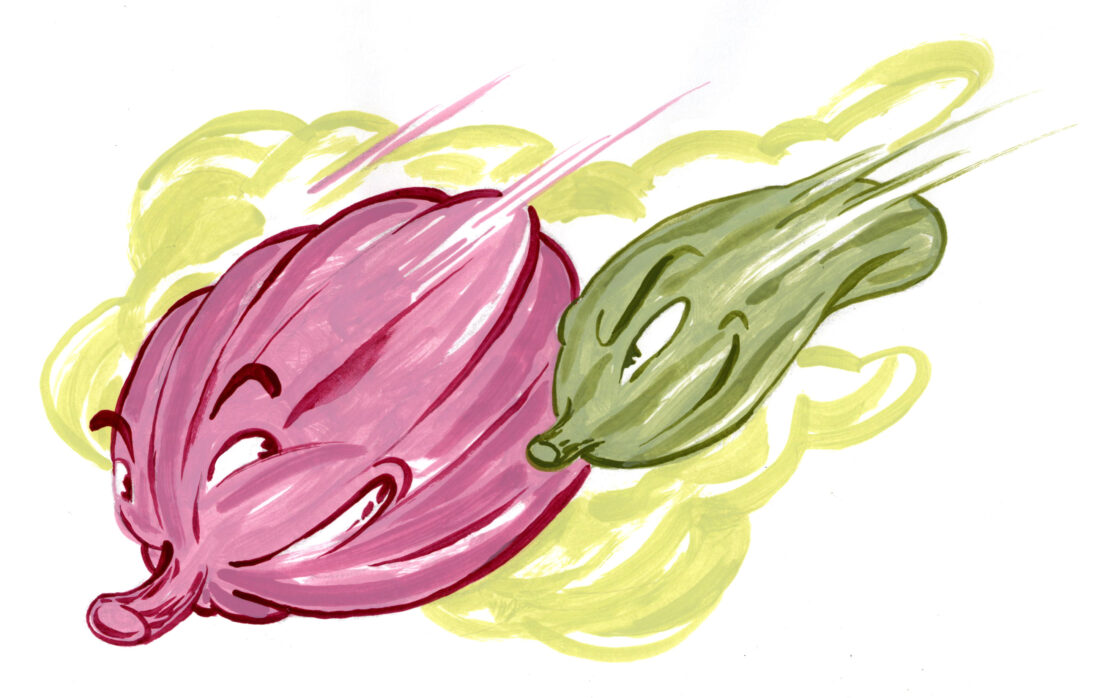
Carving jack-o’-lanterns is a fall tradition, but what about launching them thousands of feet into the air? At Hayesville’s weekend-long Punkin Chunkin Festival (October 18–19), competing teams build medieval-style weapons to fling pumpkins over a forty-two-acre mountain ranch—a scene straight from the playbook of Monty Python. Bob LeKites, who helped kick off the Western North Carolina event fifteen years ago, makes cameos as a comic relief launcher, casually tossing gourds. The team OFC Knightmare has used human-powered trebuchets to send pumpkins to the skies, while Team Carbo from Raleigh built a Roman-style onager to send them just a hair farther. The Hayesville Hurlers, led by Tony Wiegold and his family, are the festival’s reigning champions, launching the savory projectiles up to 2,500 feet in recent years with a thirty-foot-barrel cannon powered by a couple of compressed air tanks. (The boom echoes for miles.) Wiegold’s secret to a good chunkin’? Using Crisco-covered mini pumpkins. Even with those modifications, “there are times that it pies,” or explodes in midair, he says. “But the crowd likes that, too.”
South Carolina
Lit in the Lowcountry
Festival
The Charleston Literary Festival got its name (and start) from the Charleston House in Sussex, England—the historic home of the Bloomsbury Group, a collective of early-twentieth-century writers, thinkers, and painters—which began hosting an arts festival over thirty years ago. In 2017, the festival expanded across the pond to Charleston, South Carolina, where panels of authors discuss their works with one another and an eager audience. “When you tell stories in Charleston, they’re imbued with a deeper sense of meaning, because this city holds the history of the entire United States in its cobblestones,” says Sarah Moriarty, the festival’s executive director. This year’s ten-day (November 7–16) lineup includes Imani Perry, Joyce Carol Oates, Patricia Lockwood, and Congressman Jim Clyburn. Opt for the three-day VIP package if you’re into soirees at historic Charleston homes, a literary walking tour, and a stroll through a private garden.
charlestonliteraryfestival.com
Tennessee
A Hundred Grand Ole Years
Anniversary

Since it debuted as WSM Barn Dance in 1925, the Grand Ole Opry country music broadcast has changed names, moved venues, and grown in countless other ways, often alongside the genre itself. The Grand Ole Opry House, situated off Music Valley Drive just outside downtown Nashville, opened in 1974, but the show periodically ventures back to its former home at the Ryman Auditorium. “The Opry is a living, breathing community,” explains Dan Rogers, the Opry’s senior vice president and executive producer, who counts fans among the community’s ranks along with artists and staff. “It is always evolving—looking toward the future, but respectful of its past.”
On November 28, the Opry will commemorate its first hundred years with an official birthday show, and additional events throughout the year have been honoring such legends as Porter Wagoner, Bill Monroe, and Minnie Pearl. But every show offers the promise of celebration and discovery: The artist lineups are full of both big names and surprise pop-ins, and gigs so far have included Old Crow Medicine Show, Ricky Skaggs, Ringo Starr, Emmylou Harris, Mickey Guyton, and the comedian Leanne Morgan. “Opry audiences know they’re going to hear artists from the past along with superstars of today,” Rogers says. “But they’re also very likely to hear someone who is just beginning to make their name in country music—a superstar of the future.”
Texas
View As the Romans Do
Art

Fort Worth—or Cowtown, as locals call it—might be among the last places on earth one would expect to find a trove of ancient Roman sculptures, many of them exhumed from storied estates. This fall, however, the Kimbell Art Museum will welcome an unprecedented exhibition crossing the Atlantic for the first time, bookended by stops in Chicago and Montreal. Myth & Marble: Ancient Roman Sculpture from the Torlonia Collection (in Fort Worth September 14–January 25) features fifty-eight highlights from Rome’s noble Torlonia family’s six-hundred-plus-piece collection, including twenty-four newly restored works that haven’t been on view in nearly a century. “The Torlonia Collection is the largest and most important private collection of ancient Roman sculpture in the world, but the fact that it’s been largely unseen since shortly after World War II, even by specialists, has given it a legendary aura,” says the Kimbell’s director, Eric M. Lee. Expect everything from relief carvings and busts to large-scale statues of gods and goddesses and six-thousand-pound sarcophagi, some dating back to the fifth century BC.
Virginia
Check In like a Jetson
Hotels
With its zigzag roofline, roadside swimming pool, and towering sign, Roanoke’s Colony House Motor Lodge doesn’t look like a typical historic property. But the revitalized sixty-seven-room motel stands as a rare Virginia example of Googie, a space-age style that flourished in 1960s Los Angeles. Alison Blanton, an architectural historian who helped nominate the building for the National Register of Historic Places, says the style reminds her of the Jetsons: “It’s a very distinct look designed to catch the eye of the passing motorist.” Built in 1959 and recently reopened after a $10 million renovation, the motel preserves retro features like louvered room doors and painted breeze-blocks. The refresh also added updated amenities like phone chargers, high-end linens, locally made furniture, and a bike-wash station. Cornerstone Hospitality, which specializes in restored properties like the Cradock Terry Hotel in a former Lynchburg shoe factory, manages the motel. Guests will find a poolside Shasta trailer bar, and locals often join for lawn movies, music, and game nights. Michael Farrell, whose family redeveloped the property, said he’s proud they preserved the landmark. “We wanted to restore this important piece of modern architecture,” he says. “It’s not just a new hotel but really an asset to the community.”
Washington, D.C.
Chaat Group
Opening
Fifteen years ago, Meherwan Irani and his wife, Molly, opened the doors of Chai Pani—showcasing street-food-inspired Indian cooking—in Asheville, and ran out of food by midday. Since then, the demand has only skyrocketed as the restaurant has revolutionized Indian cuisine in the States, collected accolades including an Outstanding Restaurant James Beard Award in 2022, and opened another location, in Decatur, Georgia. This past summer, it also planted a flag in the nation’s capital. Chai Pani DC recently landed in the Union Market District, helmed by Irani’s longtime friend and fellow James Beard honoree Vishwesh Bhatt, known for his tenure at Snackbar in Oxford, Mississippi. The menu still features Chai Pani’s popular chaats, including the crunchy okra fries and kale pakoras, plus Irani’s signature Sloppy Jai. But it makes room for Bhatt to bring in small plates inspired by his home region of Gujarat, too, and Snackbar-esque dishes more reflective of Southern cuisine, as well as expand the grill, or sigri, offerings. “Vish is recognized as a Southern chef as much as he is an Indian chef,” Irani says. “There’s this beautiful marriage of where he is, who he is, and where he’s from that creates a transformative experience at Chai Pani DC.”
West Virginia
Peanut Party
Food
Adam Kimble has a trick to lure customers into his shop. He’ll put some cashews in the roaster or start a batch of caramel popcorn and let the scent waft into downtown Charleston. “We try to time it right to put our smell out when we know the streets are full of people,” says the third-generation owner of the Peanut Shoppe, which marks its seventy-fifth anniversary this year. Kimble’s grandfather, a policeman, opened the storefront in 1950 for the Planters Nut and Chocolate Company. A decade later, the national firm got out of the retail business, but the family kept the store operating independently. Today chocolate-covered peanuts remain the bestseller, followed closely by cashews. Kimble says he now sees the grandchildren of customers his grandfather once served. Although the shop has adapted over the years—it now accepts Apple Pay—Kimble doesn’t expect much change in the decades to come. The nut and candy business has always been about providing an affordable indulgence. “Even during some of the hard times,” he says, “people keep their comfort food.”
—Larry Bleiberg, Helen Bradshaw, CJ Lotz Diego, Robert Alan Grand, Carrie Honaker, Jennifer Kornegay, Sallie Lewis, Lindsey Liles, Grace Roberts, Dacey Orr Sivewright, and Danielle Wallace





